
Journal of Financial Market Infrastructures
Scope & Guideline
Illuminating the Future of Financial Infrastructures
Introduction
Aims and Scopes
- Liquidity Mechanisms and Efficiency:
The journal explores various liquidity-saving mechanisms and their impact on payment systems, highlighting methods to enhance efficiency in liquidity management. - Central Counterparty Risk Management:
Research in this area focuses on understanding and improving the risk management practices of central counterparties, including margin models and stress testing methodologies. - Payment System Innovations:
The journal covers innovations in payment systems, including comparisons between centralized and decentralized networks, and the implications of digital currencies. - Regulatory and Systemic Risk Analysis:
Contributions often analyze the regulatory frameworks affecting financial market infrastructures and systemic risks, particularly in the context of market disruptions. - Cyber Risk and Resilience:
The journal addresses the growing concern of cyber risks in financial systems, offering insights into mitigating strategies and resilience planning. - Procyclicality and Market Stability:
A significant focus is placed on procyclicality in financial markets, examining how different models and policies can stabilize or destabilize the market during economic fluctuations.
Trending and Emerging
- Decentralized Finance (DeFi):
Research on decentralized finance, particularly the effectiveness of decentralized exchanges (DEXs), is on the rise, highlighting a shift towards exploring blockchain technologies and their implications for traditional finance. - Climate Risk Integration:
There is an increasing focus on integrating climate risk into financial decision-making and risk management, reflecting a broader awareness of environmental sustainability in financial markets. - Central Bank Digital Currencies (CBDCs):
The exploration of CBDCs and their potential impact on traditional banking systems is becoming more prominent, as central banks globally consider the implications of digital currencies. - Cybersecurity Measures in Financial Systems:
As cyber threats continue to evolve, research on the transmission of cyber risk and the resilience of payment systems is gaining importance, emphasizing the need for robust security measures. - Advanced Margin Models and Procyclicality Solutions:
There is a growing trend towards developing advanced margin models to address procyclicality, particularly in light of lessons learned from recent financial stress events.
Declining or Waning
- Traditional Cash Payment Systems:
Research related to cash payment systems has diminished, likely due to the increasing digitalization of payment methods and a declining use of cash in many economies. - Historical Financial Crisis Analyses:
While historical analyses of past crises provided valuable insights, the frequency of such studies has decreased, possibly in favor of more contemporary issues such as digital currencies and current market dynamics. - Static Risk Models:
There is a noticeable decline in studies focusing on static risk assessment models, as the field shifts towards dynamic models that can better capture the complexities of modern financial systems.
Similar Journals
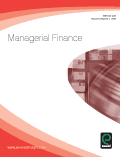
MANAGERIAL FINANCE
Bridging Theory and Practice in Financial Management.MANAGERIAL FINANCE is a prestigious academic journal published by Emerald Group Publishing Ltd, focused on the areas of finance, management, and strategy. With an ISSN of 0307-4358 and an E-ISSN of 1758-7743, this journal has carved a niche for itself within the business and financial sectors, achieving a commendable Q2 category ranking across multiple domains, including Business, Management and Accounting, Finance, and Strategy and Management, as of 2023. The journal aims to provide a platform for insightful research and critical analysis while fostering an understanding of contemporary financial practices and theories. With its wide-ranging scope, it serves as a vital resource for researchers, professionals, and students alike, looking to stay abreast of the latest trends and challenges in managerial finance. The editorial board is committed to maintaining academic rigor, ensuring that articles published are of the highest quality and relevance to the field. By bridging the gap between theory and practice, MANAGERIAL FINANCE is an essential reference for anyone involved in financial decision-making and strategic management.
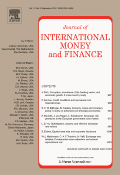
JOURNAL OF INTERNATIONAL MONEY AND FINANCE
Unveiling insights into international finance trends.JOURNAL OF INTERNATIONAL MONEY AND FINANCE is a premier scholarly publication dedicated to advancing the understanding of international finance and monetary economics. Published by Elsevier Science Ltd, this esteemed journal has been disseminating critical research since its inception in 1982 and will continue to contribute to the field through 2024. With a strong international presence and headquarters in the United Kingdom, the journal boasts an impressive collection of articles that explore significant trends, challenges, and innovations in the areas of economics and finance. Recognized for its impact, it ranks in the top quartile (Q1) in both the Economics and Econometrics and Finance categories as of 2023, signifying its influence and relevance among peers. Researchers, professionals, and students in these disciplines can benefit from the journal's rigorous peer-review process, ensuring high-quality scholarly outputs. Though not currently an open-access journal, it provides various subscription options to foster access to groundbreaking research in the financial ecosystem.

Annual Review of Financial Economics
Unveiling Insights in Financial EconomicsAnnual Review of Financial Economics, published by Annual Reviews, stands as a pivotal journal in the fields of Economics and Finance, recognized for its rigorous analysis and comprehensive reviews since its inception in 2010. With an impressive impact factor reflected in its Q1 ranking in both Economics and Econometrics and Finance for 2023, this journal serves as an essential resource for researchers, professionals, and students keen on understanding the dynamic interplay of financial theories and practices. The ISSN 1941-1367 and E-ISSN 1941-1375 signal its commitment to accessibility and dissemination of cutting-edge research within the community. Addressing crucial topics from market behavior to economic modeling, each annual volume synthesizes the latest findings and theoretical advancements, thus contributing significantly to the global discourse within financial economics. With its high Scopus rankings, including a finance rank of #75 out of 317, the journal continues to foster a deep understanding of financial systems and their implications, serving as an invaluable tool for anyone engaged in the broader economic landscape.
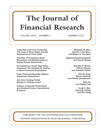
JOURNAL OF FINANCIAL RESEARCH
Charting New Territories in Financial InquiryThe JOURNAL OF FINANCIAL RESEARCH, published by WILEY, stands as a pivotal platform for disseminating innovative research in the fields of finance and accounting since its inception in 1978. With an ISSN of 0270-2592 and an E-ISSN of 1475-6803, this journal aims to address contemporary challenges and trends within the financial research landscape. It has achieved notable recognition, being placed in the Q2 category for both Finance and Accounting in the 2023 rankings, signifying its relevance and impact within the academic community. Although it does not currently offer open access, the journal is accessible through various academic databases, catering to a diverse audience of researchers, professionals, and students keen on advancing their knowledge and understanding of financial systems and methodologies. With an evolving scope that encompasses empirical studies, theoretical frameworks, and practical applications, the JOURNAL OF FINANCIAL RESEARCH is committed to contributing valuable insights into the complexities of financial practices and policies.

Risk Management-An International Journal
Elevating Risk Management to New HeightsRisk Management - An International Journal is a premier publication dedicated to advancing the understanding and methodologies of risk management across various sectors, including business, finance, and economics. Published by Palgrave Macmillan Ltd in the United Kingdom, this journal not only maintains a robust presence in the scholarly community but also ranks in the Q2 category for Business and International Management and Finance, as well as Q3 for Economics and Econometrics and Strategy and Management. With its diverse scope and commitment to high-quality research, the journal provides essential insights for academics, practitioners, and students alike, helping to shape the future of risk management practices globally. While not an open-access journal, its rigorous peer-review process ensures that only the most impactful and relevant studies are featured. Covering topics that converge the years from 2006 to 2024, Risk Management represents a vital resource for those looking to deepen their knowledge in this critical field.
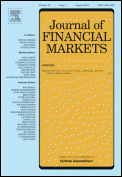
JOURNAL OF FINANCIAL MARKETS
Driving discourse on financial innovations and policy impacts.Journal of Financial Markets, published by Elsevier, is a premier academic journal focusing on the theoretical and empirical aspects of financial markets. With its ISSN 1386-4181 and E-ISSN 1878-576X, this journal has solidified its reputation as a leading source in both the Economics and Econometrics and Finance fields, achieving a Q1 ranking in 2023 across these categories. Operating from Amsterdam, Netherlands, the journal not only highlights significant research developments but also fosters discussion on the implications of financial innovations and policy changes. The impact factor reflects its critical role among academic peers, contributing to the advancement of knowledge in financial systems and market behavior. Although not open access, the journal provides numerous subscription options for those eager to explore its wealth of resources and broaden their understanding of dynamic financial phenomena.

European Journal of Finance
Innovating insights for tomorrow's financial leaders.European Journal of Finance is a prestigious publication specializing in the domains of finance, economics, and econometrics, published by Routledge Journals, Taylor & Francis Ltd. Established in 1995, this journal has become a vital resource for researchers, practitioners, and students, contributing significantly to the understanding of financial systems and markets. With its Q1 ranking in the Economics, Econometrics and Finance category, it stands out for its rigorous peer-reviewed articles that explore innovative theories, models, and empirical studies. The journal's impressive Scopus ranking of 35 out of 242 highlights its impact and relevance within the field, with an 85th percentile standing that underscores its importance to current financial research. Although it does not offer open access, the European Journal of Finance remains a cornerstone for those seeking to delve deeper into the complexities of finance, equipped with insights that drive both academic inquiry and practical application.
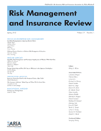
RISK MANAGEMENT AND INSURANCE REVIEW
Fostering Dialogue on Contemporary Risk ChallengesRISK MANAGEMENT AND INSURANCE REVIEW, published by Wiley, is a vital journal for researchers and practitioners in the fields of accounting, economics, and finance. With an ISSN of 1098-1616 and an E-ISSN of 1540-6296, this journal serves as a comprehensive platform for the dissemination of cutting-edge research and insights into risk management and insurance practices. Although it does not offer an open-access model, it is recognized for its rigorous peer-review process and maintains an impactful presence within the academic community, reflected in its 2023 Scopus rankings in various disciplines, including its Q3 quartile status across multiple categories. The journal's scope addresses key contemporary issues in risk assessment, financial stability, and insurance innovation, contributing significantly to the evolving discourse in these areas. As it converges from 2006 to 2024, RISK MANAGEMENT AND INSURANCE REVIEW continues to attract a diverse readership, providing valuable resources and fostering dialogue among students, professionals, and established researchers alike.
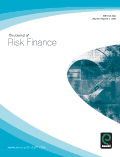
Journal of Risk Finance
Connecting theory and practice in risk finance.The Journal of Risk Finance, published by Emerald Group Publishing Ltd, is a premier academic journal dedicated to advancing the understanding of risk management and finance practices since its inception in 1999. With a strong foothold within the Q2 rankings in both Accounting and Finance categories, it proudly holds a significant place in the scholarly landscape, ranking #54 out of 317 in the Scopus Economics and Finance category, placing it in the 83rd percentile. The journal aims to facilitate the exchange of innovative research and practical insights, catering to an audience of researchers, professionals, and students eager to explore contemporary issues in risk finance. While not an open access journal, it provides numerous access options, ensuring that essential findings reach a broad readership. Set in the United Kingdom and covering publications up to 2024, the Journal of Risk Finance continues to be an indispensable resource for those committed to this critical field.
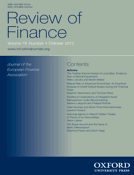
Review of Finance
Cultivating excellence in finance, accounting, and economic scholarship.The Review of Finance, published by Oxford University Press, stands as a premier academic journal in the fields of Finance, Accounting, and Economics. With an ISSN of 1572-3097 and an impressive track record stretching from 2001 to 2024, this journal is consistently recognized for its high-quality research, reflected in its Q1 rankings across key categories, including Accounting, Finance, and Economics and Econometrics. The Review of Finance is dedicated to advancing the understanding of financial phenomena through robust empirical and theoretical insights, making it an essential resource for researchers and professionals alike. Additionally, its strong Scopus rankings, placing it in the top percentiles, highlight its influence and relevance in ongoing academic discourse. Although the journal is not open access, it remains widely accessible through academic institutions, ensuring that its valuable contributions reach an extensive audience. The editorial board invites submissions that promise to further engage the academic community in the dynamic intersections of finance, accounting, and economic research.